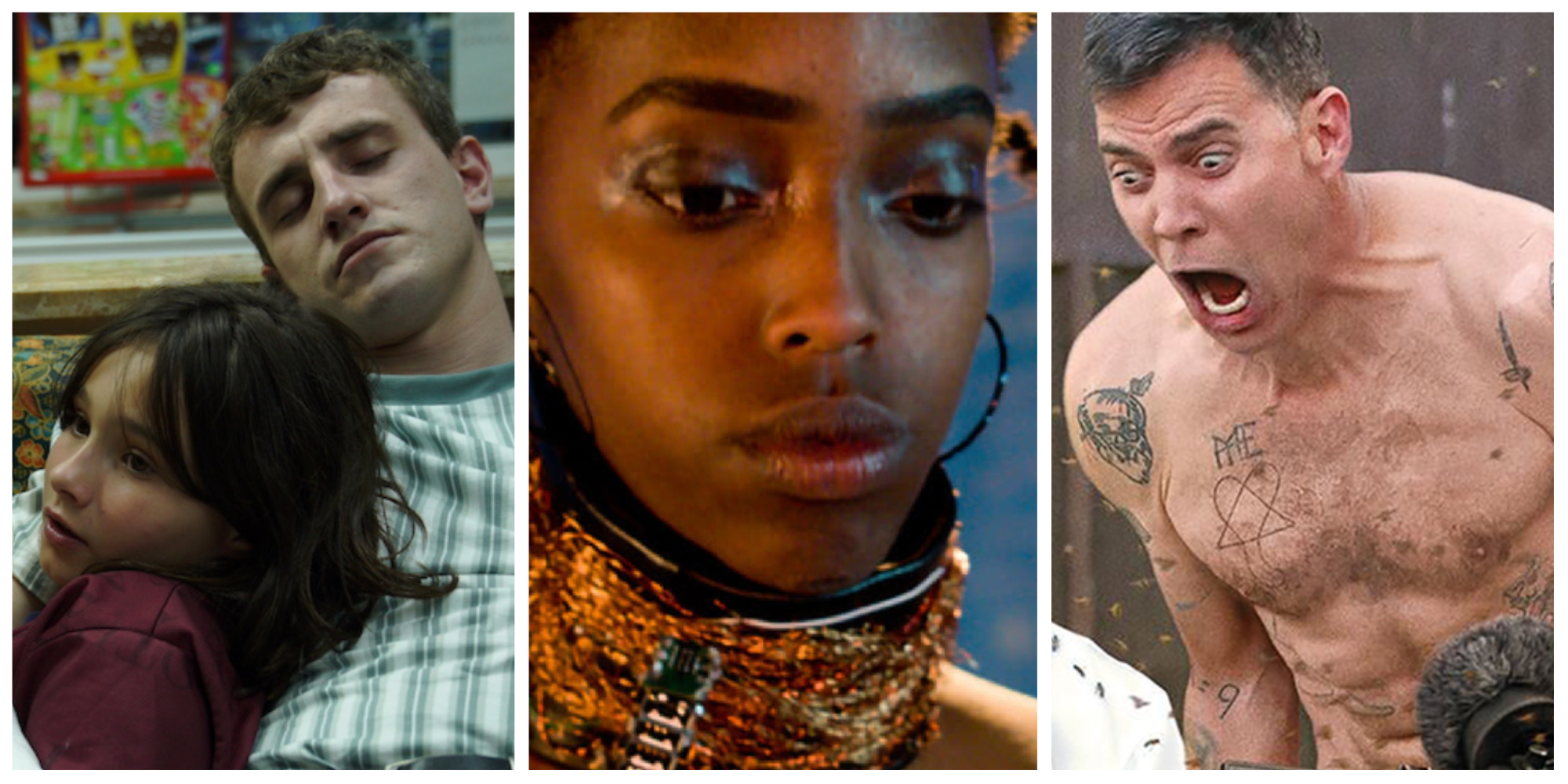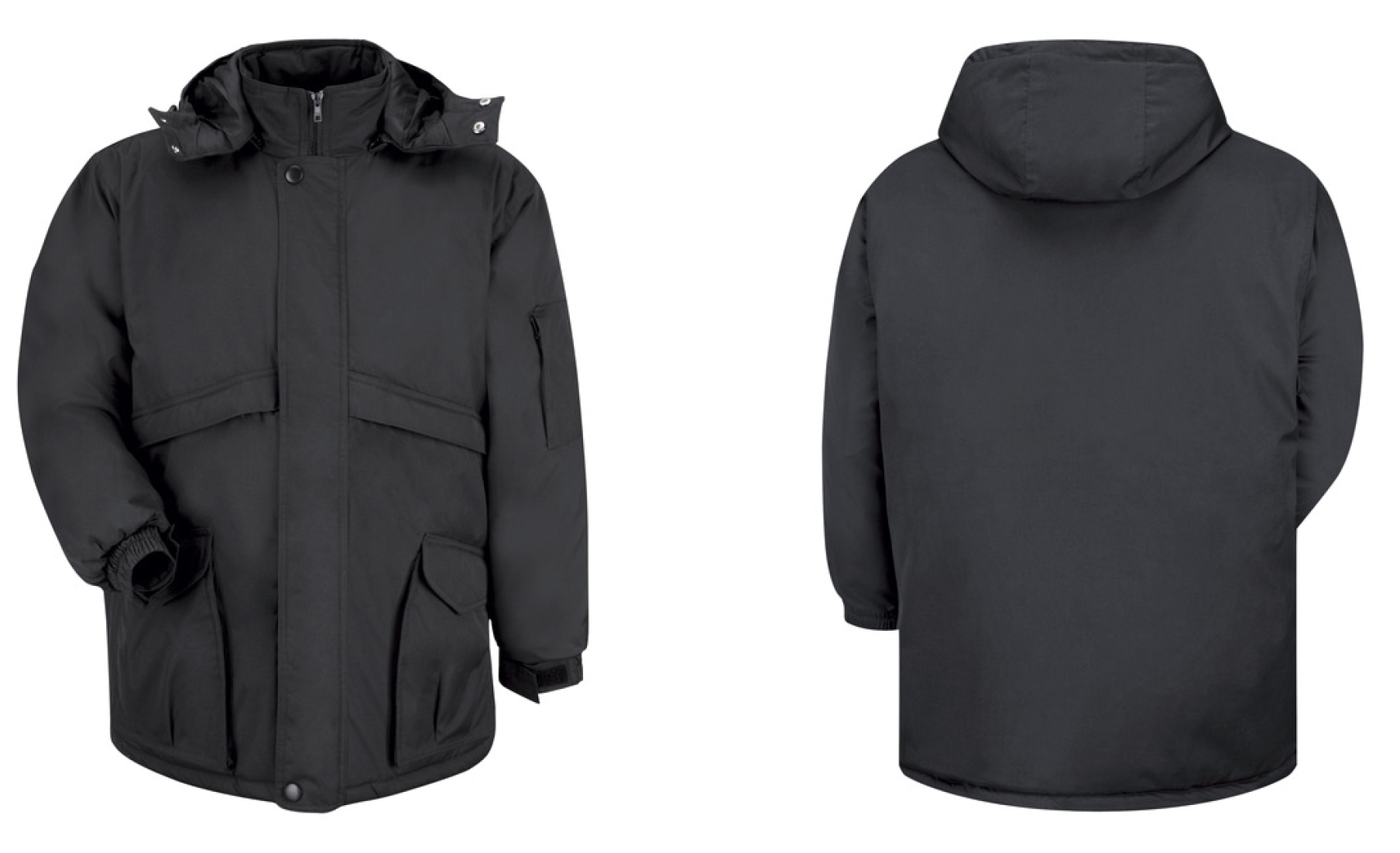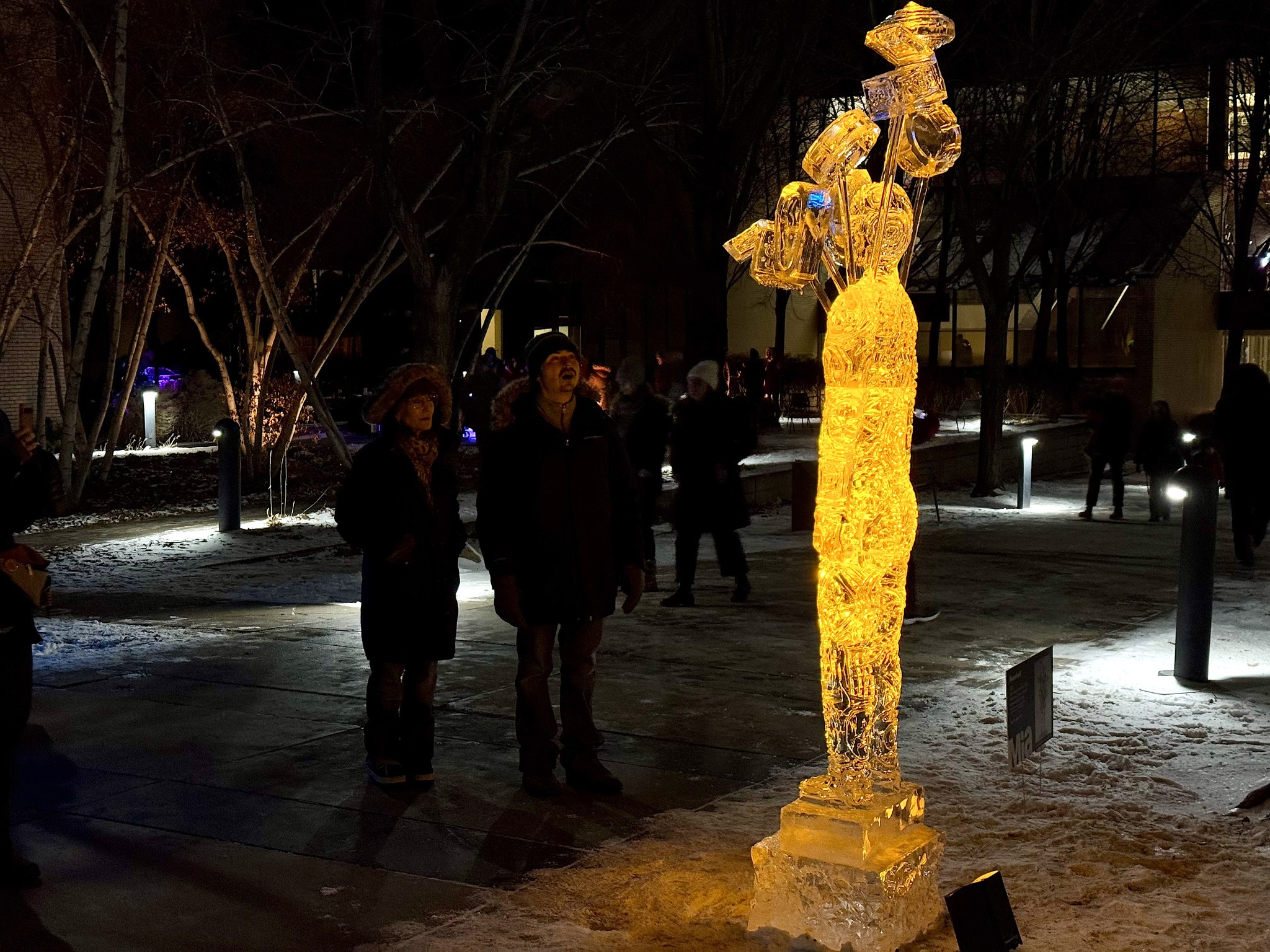One of the best moviegoing experiences I had all year was at a cineplex the day after Thanksgiving. The Showplace ICON in St. Louis Park, to be specific, situated in the Potemkin downtown of that glorified strip mall called “the Shops at West End.” The screening of Glass Onion I attended was packed, as was just about every showing of Rian Johnson’s new sequel across the country that weekend. (At AMC Southdale, it was sold out all day.)
Glass Onion wasn’t my favorite movie of the year, but you know what? I got to laugh at the same jokes everyone else did, and in public. As fewer blockbusters show any wit and arthouse films (hardly joke factories anyway) pique the curiosity of the mainstream movie fan less than ever, it was a relief to be nestled somewhere in the middle with my fellow citizens for a change. When you laugh with a crowd you feel less alone; when you laugh alone at a movie on Netflix you look like this.
My Glass Onion experience made me think that maybe one year I’ll scrap my “best of” list entirely and instead focus on my favorite also-rans, the B/B+ movies that are the real core of the movie industry. I’d recall the scenes or performances or images that stuck with me from undeniably flawed films, or remind myself of the thrills and jokes that made a movie a fun but forgettable diversion. This year, I’d include small, intimate films like the mature romances of Ali and Ava and A Love Story. I’d celebrate how Joey King martial-arted her way out of a castle tower in The Princess or Amber Midthunder outwitted the Predator in Prey. Maybe I’d even defend the adequacy of much-loathed movies like Men and White Noise without overpraising them. I’d for sure mention Steven Soderbergh’s annual just-good-enough exercise in filmmaking.
The passably satisfactory middle is vanishing for theaters, now more likely to go straight to streaming or be drawn out in a six-part miniseries. Once again in 2022, we heard that audiences were avoiding so-called adult films, a situation I’d feel worse about if I’d wanted to see the ones on offer myself. In a better world, David O. Russell and Damien Chazelle stiffing financially and critically in the same year might help studios kick their addiction to male geniuses. (I never got around to Babylon because I didn't need to watch an elephant shit on a guy; similarly I sat out Triangle of Sadness because I didn't need to watch the wealthy vomit repeatedly. Maybe both are great!) Instead they’ll probably just pare away the midrange even further and just double down on spectacle.
Still, though the list of the year’s highest grossing movies is, as you might expect, dominated by Marvel flicks, there are small signs that people want to be dazzled with something spectacular but not vacuous, ambitious but not pretentious. The year’s biggest moneymaker, Top Gun: Maverick, may be woodenly scripted and, uh, ideologically suspect, but its success suggests that audiences miss old-fashioned practical effects and non-super heroes. Maybe Avatar: The Way of Water did so well because people want to watch an eye-popping franchise that they don’t have to form their whole identity around.
Granted, those are both sequels. But some surprise one-off successes also give me hope. The warm, weird Everything Everywhere All at Once may be too long, too goofy, and just too too. But the Daniels’ beloved metaverse romp wouldn’t have succeeded at all if they weren’t willing to fail occasionally, and if the film’s online cult is as irritating as any other, at least they’re taking a stand for something unexpected. Even the garish Elvis, which tells the story of perhaps the first person to transform from human to pure exploitable IP, indicated a yen for formally adventurous direction and editing. (Who says I can't say something nice about Baz Luhrmann?)
Right about now, I should say that none of these movies are on my list below. Maybe a quarter of my favorites made any appreciable amount of money. At least a quarter have more insight into family dynamics than The Fabelmans. Only two of them star Tilda Swinton. (Sorry, Three Thousand Years of Longing. You were another solid B/B+.) Most are small-scale human dramas, which, as a small-scale human (though not a particularly dramatic one) I tend to appreciate. Maybe you will too.
20. Girl Picture
It feels reductive to call this exuberant Finnish flick a teen sex comedy even though it is a) a comedy b) about teens having c) sex. Sarcastic goth Mimmi has to face her abandonment issues when she falls for driven figure-skater Emma, who flexes her independence as she finally discovers something she cares about besides skating for the first time in her life. As for Rönkkö, she likes boys, but no matter who she hooks up with she just can’t get no satisfaction. There’s drama eventually, but not tragedy, and there’s way more pure joy. Just fucking adorable.
19. Neptune Frost
Slam-poet turned rapper Saul Williams is an ace word-worker who’d spent much of the 21st century searching for the ideal outlet for his verbal talents before releasing the poetically political if sometimes perplexing MartyrLoserKing in 2016. Now, in collaboration with the Rwandan-born cinematographer (and Williams’s wife) Anisia Uzeyman (credited here as SWAN), he’s latched that album’s densely knotted imagery onto an astounding directorial debut, a vision of African techno-tribal hackers resisting their neo-colonial masters, with a production design that communicates as directly (if not more so) as any plot. Special credit goes to Cedric Mizero’s brilliant costuming, which reworks traditional African garb, disconnected tech, and high fashion. (Full review here.)
18. You Won’t Be Alone
Set in the 19th century Macedonian countryside, You Won’t Be Alone sometimes seems to take place in a world even more distant. Events drift along with the poetically coherent logic of a folktale, suggesting scraps of fables that teach inconclusive morals. At the center is Nevena, a mute, feral shape-shifter determined to reject the untethered freedom of supernatural power in favor of the harsh limitations yet collective comforts of human society, even if she has to leave a trail of corpses to get there. With his use of naive, wondering voiceover and his delirious nature-infatuated flow of imagery, writer-director Goran Stolevski has already drawn Terence Malick comparisons, and I’ll take this witchy, body-hopping argument for humanity over most of that artiste’s recent overblown perfume commercials. (Full review here.)
17. Petite Maman
Céline Sciamma followed up her biggest film, Portrait of a Lady on Fire, with her smallest, a fantasy about an eight-year-old girl getting to bond with her mother when she was the same age. In previous films Tomboy and Water Lilies, Sciamma told the stories of pre-teens and adolescent with empathy and nuance, illuminating the complicated mess of desire and jealousy that contributes to forming our identities. But there’s little to no conflict here, just the simple wish fulfillment of engaging with a parent as an equal. Quiet, sweet, short.
16. Mr. Bachmann and His Class
Oh, so you say you don’t have the patience for a nearly four-hour vérité doc about a German teacher and his class of mostly immigrant teens? Just watch it a half-hour at a time and pretend it’s the latest prestige series from HBO then. Bachmann is a colorful guy, but he’s no heroic savior. Because he commits to the steady, daily work of engaging kids as a means of expanding their perspectives, the prolonged runtime is essential. We learn about the students, and about Bachmann himself, the same way they learn about each other—slowly, and over time...
15. Jackass Forever
If I wanted to be fancy about it, I’d make some detailed argument about how Johnny K and co. carry the treasured cinema traditions of slapstick and physical comedy to their logical extremes. Maybe I’d add that there’s kind of a “one last big score” feel to the way Jackass Forever reunites the crew of stuntmen/practical jokers/punishment gluttons, and/or how their unfussy guys-being-dudes camaraderie has deepened with age. Or I could just point out that a guy getting hit in the nuts with a fast-pitch softball is empirically hilarious. Of all the dipshit turn-of-the-millennium extreme shock bros, the Jackass gang landed on the rightest side of history. Even if they probably landed on their heads. (Full review here.)
14. Happening
On one hand, we can never have too many movies reminding us of the horrors faced by women forced to seek illegal abortions. On the other, using the will-she/won’t-she of a pregnant girl’s fate as a plot device can feel exploitative. What always makes the difference is how much the central character feels like a human with a basic need rather than an example of a dilemma. And what distinguishes Audrey Diwan’s Happening (an adaptation of 2022 Nobel winner Annie Ernaux’s memoir/novel) is a resolute performance from Anamaria Vartolomei as Anne, a French teen in the early ’60s who’s determined not to let a clump of cells derail her education. Whether she reveals her pregnancy or not, Anne’s situation changes her relationship with the other girls at school, with her working class parents, and with opportunistic male predators. As for the horrors, well, they’re here, bloody, raw, and shocking as we need to remember them as being.
13. Nope
A sitcom chimp wreaks bloody havoc on his human co-stars. Years later, a survivor of the massacre makes a saucer-like UFO the centerpiece of a murderous sideshow. In the aftermath, two Black siblings risk their lives to capture the extraterrestrial craft on film. What does it all mean? Jordan Peele’s heady sci-fi/western is as fun to think about afterward as it is to watch, and more fun to imagine as a kaleidoscope of ideas constantly rearranged into different patterns than as a puzzle to solve once and for all. None of it would work without the interplay between Daniel Kaluuya and Keke Palmer as the horse-wranglers who face down the interstellar threat by turning their backs on it. I wouldn’t say the message here is anything as simple as “committed taciturn masculinity and female improvisational hustle need each other to get by,” but nothing we see contradicts that. (Full review here.)
12. The Banshees of Ishirin
Awash in lush emerald greenery and loquacious lyrical patter, writer-director Martin McDonagh’s latest is at first indistinguishable (to an occasionally annoying fault) from your typical crowd-pleasing dollop of light-arthouse Irish begorrah. But slowly the story burrows away below its charming veneer to reveal the slowly corrosive emotional effects of life in an isolated village. When dour Colm (Brendan Gleeson) severs ties with his lifelong friend Pádraic (Colin Ferrell), the abandonment obsesses and corrupts the vacuously friendly villager, till his desperation reaches a level somewhere between a romcom clod refusing to accept a breakup and a Bergman protagonist beholding the silence of God. Suddenly faced with the prospect that his niceness, which he always considered an asset, is in fact a sign of emptiness, Pádraic allows his inner self to curdle. He cultivates a meanness that can pass for a personality in his stultified town. A man of no particular inner depth suffering a crisis of conscience is truly a horrific thing to behold. (Full review here.)
11. X
From Barbarian to Nanny, most of this year’s many celebrated horror-outside-the-box flicks didn’t quite tingle my spine. But Ti West went two-for-two: In fact, X’s sequel, Pearl, may peak higher, especially when Mia Goth’s terrifying would-be starlet delivers a sympathetic/psychotic monologue for the ages. But this slasher movie tribute/deconstruction is where a student of technique pays his respects with a keen self-awareness that doesn’t bog down in meta-irony. West never forgets his first job is to creatively end the lives of sexy young people, even if he lets them gab and screw and sing an entire Fleetwood Mac song before the knives come out. X dares you to feel sympathy for its devils, indulges and mocks and toys with your repulsion for the aged, and, in the end, suggests that porn is a better path toward salvation than Jesus—or at least, along with low-budget horror, a better path toward cinematic innovation than the avant-garde. (Full review here.)
10. Tár
We all want Cate Blanchett to be mean to us. And Tár is a showcase for the malevolent edge to her charisma that draws us in, that chilly assurance rooted in old Hollywood glamor, but with a more complex queer sexuality than even the most Code-threatening femme fatale could ever flex. Even the imperfection of Todd Field's study of a career in collapse seems fitting in its way. What occasionally trips Tár up as it approaches the finish line isn’t its exploration of gender, or of the crumbling wall between the public and the private, but the instability of genre at this moment in our messy, endless doomscroll of history. What could a movie in 2022 do with such a charming sociopath that would feel narratively fulfilling? (Full review here.)
9. The Eternal Daughter
Not so much the completion of Joanna Hogg’s semi-autobiographical Souvenir trilogy as an affecting coda. In the earlier films, Hogg followed the halting journey of her alter ego, Julie, (Honor Swinton Byrne, daughter of Tilda Swinton) toward artistic and personal independence. Here, Julie and her mother are much older, visiting an eerily underpopulated hotel, and both played by Tilda S. (who was cast as Julie’s mother in the two Souvenir films). While enduring hints of the supernatural and the exasperation of a surly front desk attendant, Julie quietly struggles with a child’s undying need to please a parent. Pair it with Aftersun (see below) for a wrenching double feature about the unknowability of them that birthed us.
8. Crimes of the Future
Is David Cronenberg an optimist? His latest dystopia suggests that after the world crumbles we can all kick back and talk aesthetics in drab basements while indulging new forms of omnisexual hunger. (Regular hunger too: Some newly evolved folks can digest plastic.) Blurring the line between stoic and passive, Viggo Mortenson’s Saul Tenser, who spontaneously generates new organs in his sleep, collaborates with former surgeon Caprice (Léa Seydoux) for a knockout performance art act in which she remotely lifter-pullers a new growth from his bowels. All around them, plots and counterplots are hatched, a child is smothered onscreen, drills enter the skulls of the misfortunate, and even casual conversations feel conspiratorial, but the likelihood of some society-rupturing conflagration feels impossibly distant. Oh, and let me make special mention of Kristen Stewart’s enraptured bureaucrat Timlin; sniveling yet intense, she’s the hot lesbian Peter Lorre the 21st century deserves. (Full review here.)
7. All the Beauty and the Bloodshed
Laura Poitras’s documentary balances the three acts of Nan Goldin’s life—cloistered suburban girl, groundbreaking art photographer, and righteous anti-opioid activist—by cutting back and forth between them. We move freely from Goldin coping with her sister’s horrific suicide to the artist’s drive to document the queer and underground scenes she and friends formed in Boston and New York to her current crusade to remove the names of the Sackler family, those OxyContin pushers, from museum exhibits. And as a result we feel like we’re viewing the same woman from different angles, rather than tracking the linear progression of one person’s life over time. It’s no small feat to tell the story of a person who has documented her own life so thoroughly, but Poitras meets the challenge.
6. Playground
When bullies target her older brother Abel (Günter Duret), seven-year-old Nora (Maya Vanderbeque) tries to stand up for him, which only spurs his tormentors on while threatening her own social standing with her new friends. Belgian filmmaker Laura Wandel’s debut feature studies the cruel recess politics of children from their own level. Literally so: The camera adopts a child’s-eye view of a world that’s ruled by a code incomprehensible to adults, whose intervention just worsens conditions. Wrapped up in a terse 72 minutes, Playground offers a bleak, one-sided take on childhood that may not be the whole story but meaningfully underscores the half of it that grown folk tend to forget.
5. RRR
My knowledge of contemporary Indian popular film is so pitiful I can’t pretend this is an informed judgment, and my familiarity with Indian nationalist politics is so sketchy that at times I couldn’t tell if this anti-colonial historical epic was as reactionary at its core as Maverick. But I do know that S.S. Rajamouli is responsible for the most delightful, consistently surprising action movie I saw this year. Among the sequences that made me laugh and cheer at the same time: a dance sequence mocking the effete British, an CGI tiger unexpectedly leaping into battle, and the most destructive flame-abetted archery ever seen on film. When I thought I’d seen it all, we’d just reached intermission.
4. Decision to Leave
From its workaholic hangdog detective to the mysterious (possibly murderous) gal he surveils beyond the call of duty and sanity, Park Chan-wook’s Decision to Leave comes on superficially like one of those terrible erotic thriller homages people on Twitter are always so nostalgically horny for. But Park’s twist on the neo-noir is actually to strip away the eros (or at least not strip away the clothes) in favor of a pervasive longing that can feel more perverse (and more romantic) than any Shannon Tweed vehicle. Without giving too much away, a second act that initially seems like a dark coda becomes an even darker mirror image of what preceded it, allowing Park to refresh the noir truism that the more indisputable facts you’re given, the more unfathomable the human motives that lurk behind them. (Full review here.)
3. Memoria
A mysterious sound jolts Tilda Swinton awake, spurring her on a quest throughout Colombia to find its source. Because Thai mesmerist Apichatpong Weerasethakul is behind the camera, that search is hardly straightforward. Along the way, acquaintances shift identity or disappear entirely, the most mundane city streets begin to feel otherworldly, and extended single-take shots leave you no option but to scrutinize every visual detail. Memoria’s rapt attention to sonic nuance trains your ears to be just as discerning: The scene where Swinton struggles to describe her phantom noise to a young engineer, who in turn attempts to replicate it electronically, does more to make an audience hear like an onscreen character than any movie since The Conversation. The director caught some grief for keeping the film off streaming, opting instead for a limited “roadshow” release schedule, but honestly I can’t imagine taking this all in at home. You either give yourself over to the sensory experience of Memoria or it all falls flat.
2. Hit the Road
The son of censored and imprisoned Iranian cinema great Jafar Panahi shares his dad’s knack for working with child actors, though Panah P. lets his moppet discovery show off a little more—in fact, six-year-old Rayan Sarlak is so charismatic he threatens to overwhelm the movie. But his dominating charm (and incredible comic timing) is what keeps the adults trapped in a car with him for a cross-country drive from addressing their issues—and what leavens the sadness as the film’s core. The landscape they pass through is framed with awe, and one harrowing scene, filmed entirely in a long shot, dares you not to be impressed. If you’ve been looking to ease into Iranian film, start here, with the latest great humanist to join the tradition. Now when do we get to see Jafar’s latest, No Bears, in these parts? (Full review here.)
1. Aftersun
Charlotte Wells’s remarkable directorial debut follows one curious 11-year-old girl named Sophie (Frankie Corio) along a dreamlike Mediterranean vacation as she attempts to solve the riddle that is her father, Callum (Paul Mescal). We also intermittently watch Sophie 20 years later, closer to Callum’s age when she last saw him, attempting to decipher the past through her home video footage of the trip. Subtle without being opaque, Aftersun simply refuses to tell us anything it doesn’t show us, illustrating how intimacy and distance can coexist in a relationship. And Mescal works with that distance masterfully, his performance illuminating the fact that some things can’t be shown, only told: The closer Wells’s (or Sophie’s) camera approaches him, the less he reveals. (Full review here.)






